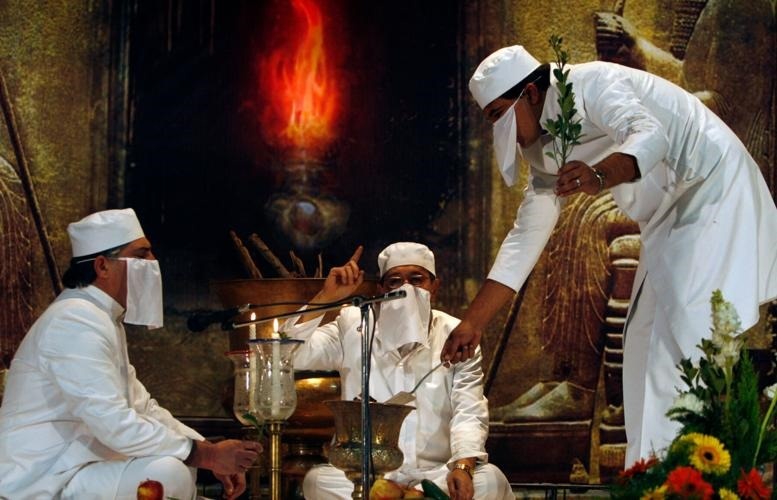One of Zoroastrianism’s Gahambar celebrations is being observed through Monday.
Zoroastrianism is an ancient religion that developed in the areas now called Iran and India.
By Aby Leila Pitchford | Advocate Baton Rouge
Zoroastrians believe their religion was revealed by the supreme God Ahura Mazda (Wise Lord) to a priest called Zarathustra (or Zoroaster in Greek). Zarathustra is the founder of the religion, and his followers call themselves Zartoshtis or Zoroastrians. Its roots are similar to Hinduism and other old religions in India.
While a very small number of people practice the religion in that area now, there are groups that immigrated to the west and formed communities in Britain, Australia and the United States.
Zoroastrians show up in Christian Scripture: The Wise Men, as some call the men who visited the baby Jesus, were called Magi in the Greek, which is a term for Zoroastrian priests at the time.
The six Gahambars are sets of special days set aside for thanking God. The name comes from a word that means “the time for collection” and refers to natural blessings humans collect.
The October Gahambar is Ayathrem, which means bring home the herds. It is a time for getting ready for winter. Communal prayer and a simple shared meal are parts of the observance.
Only necessary work is done during a Gahambar, which is a time of worship, joy and service, especially social interactions done in kindness and love. Four themes for the celebrations are pray, perform (acts of labor), eat and give (money).
Gahambar means the time of the proper season. Each lasts five days and they are spread throughout the year, originally tied to an agricultural or seasonal point. The original festivals were a day long, but when Zoroastrians switched to the Gregorian calendar, it added days to their year, so they applied the additional days to the festivals.
Later, more symbolic meanings were added to the Gahambars: Heavens, Waters, Earth, Vegetation, Animals and Humans.
The six celebrations, with their traditional and symbolic meanings, and their dates are:
Maidhyoizaremaya
Mid-spring/Heavens, April 30–May 4
Maidhyoisam
Mid-summer/Waters, June 29–July 3
Paitishahya
Harvesting time/Earth, Sept. 12–16
Ayathrima
Homecoming of herds/Vegetation, Oct. 12–16
Maidhyairya
Mid-year/winter/Animals, Dec. 31–Jan. 4
Hamaspathmaidhya
Fravardegan days or vernal equinox/Humans, March 16–20
A PDF edition of the Fezana Journal from 2014 can be found at fezana.org/fjissue/FEZANA_2014_03_Fall.pdf. It offers an in-depth look at Ghambars and the difference in celebrations around the world.
Sources: tinyurl.com/yc3benms, www.newworldencyclopedia.org/entry/Magi, zacla.org/zac-events/ayathrem-gahambar-2021/, www.multi-faithcalendar.org/events/ayathrem-gahambar-zoroastrian/, fezana.org/fjissue/FEZANA_2014_03_Fall.pdf
Facets of Faith runs every other Saturday in Living. Reach Leila Pitchford at lpitchford@theadvocate.com.

